Since their successful launch of the Vardar series of 120mm PWM fans, EKWB have followed up by releasing an ER (Extended Range) version of the F4-120 (2200 RPM) model. I already had some of the original Vardar F4-120 and having recently received some of the F4-120ER I am now able to compare the two and share my findings.
Firstly, a big thanks to EK for providing the Vardar F4-120ER samples. Without sponsor support like this we wouldn’t be able to bring you the reviews we do.

OK, let’s get stuck in and see what benefits the ER (I do like the suffix – check our watermark!) has over the Non-ER version.
The Contenders
Vardar F4-120 (2200rpm)
Vardar F4-120ER (2200rpm)
Let’s take a look at some of the specs provided by EK, plus I added some extra info which are more physical characteristics than specifications.
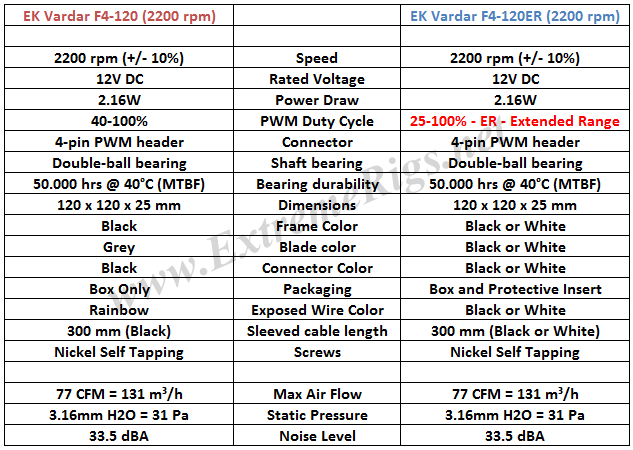 Now you can believe the details of the last 3 lines or not. Historically fan specs have been useless due to having been testing in non-real-world test scenarios and/or not providing enough info which can lead to the reader to being misinformed. Take that noise level for example; a “normal” rooms noise floor as measured on our sound meter is ~ 33 dBA and to get lower than that you better be holding your breath. Clearly at full volume you can hear these fans. So as usual don’t go taking these specs and comparing to another manufacturers specs or indeed to your own sound meter. This is not to say we are accusing EK of being misleading – we firmly believe these numbers are measured correctly, it’s just the way fan specs are done. Instead we’d suggest comparing the noise specs to other fans measured by the same setup (and preferably on a radiator while comparing the air through that same radiator as we did in our original vardar test).
Now you can believe the details of the last 3 lines or not. Historically fan specs have been useless due to having been testing in non-real-world test scenarios and/or not providing enough info which can lead to the reader to being misinformed. Take that noise level for example; a “normal” rooms noise floor as measured on our sound meter is ~ 33 dBA and to get lower than that you better be holding your breath. Clearly at full volume you can hear these fans. So as usual don’t go taking these specs and comparing to another manufacturers specs or indeed to your own sound meter. This is not to say we are accusing EK of being misleading – we firmly believe these numbers are measured correctly, it’s just the way fan specs are done. Instead we’d suggest comparing the noise specs to other fans measured by the same setup (and preferably on a radiator while comparing the air through that same radiator as we did in our original vardar test).
So analyzing the two spec we really see that differences are better packaging and a wider PWM duty cycle range.
Packaging
The Non-ER version on the left with the unique EK branding. The newer ER version has a slightly larger box and a plastic window insert.
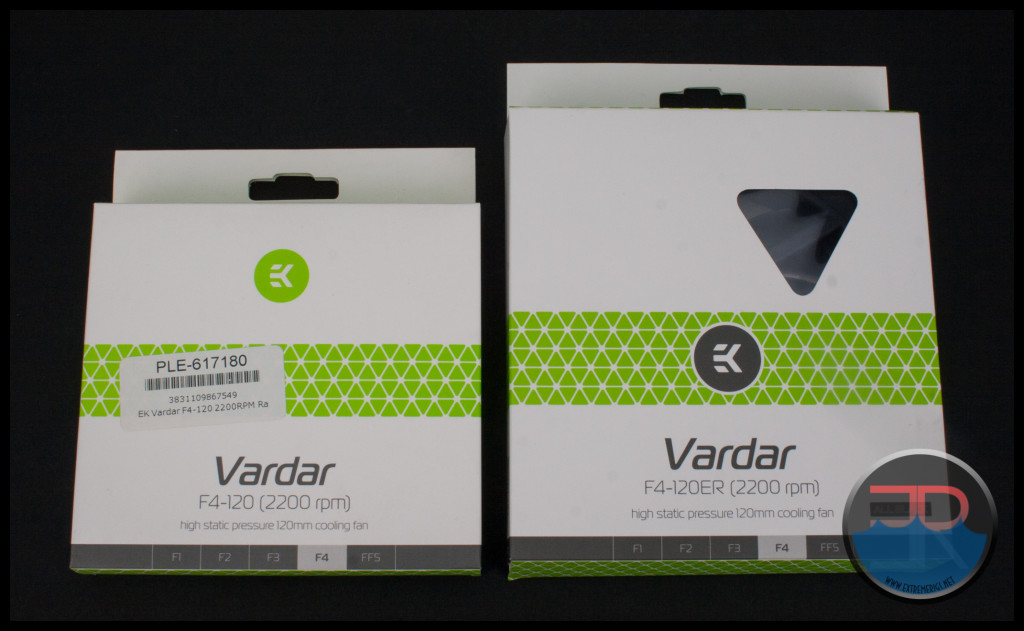 It should be noted that our non ER fan was from an early batch and that newer ones also have the same packaging as the ER now. On the back of both we find the specs for each and a 2200rpm fan curve.
It should be noted that our non ER fan was from an early batch and that newer ones also have the same packaging as the ER now. On the back of both we find the specs for each and a 2200rpm fan curve.
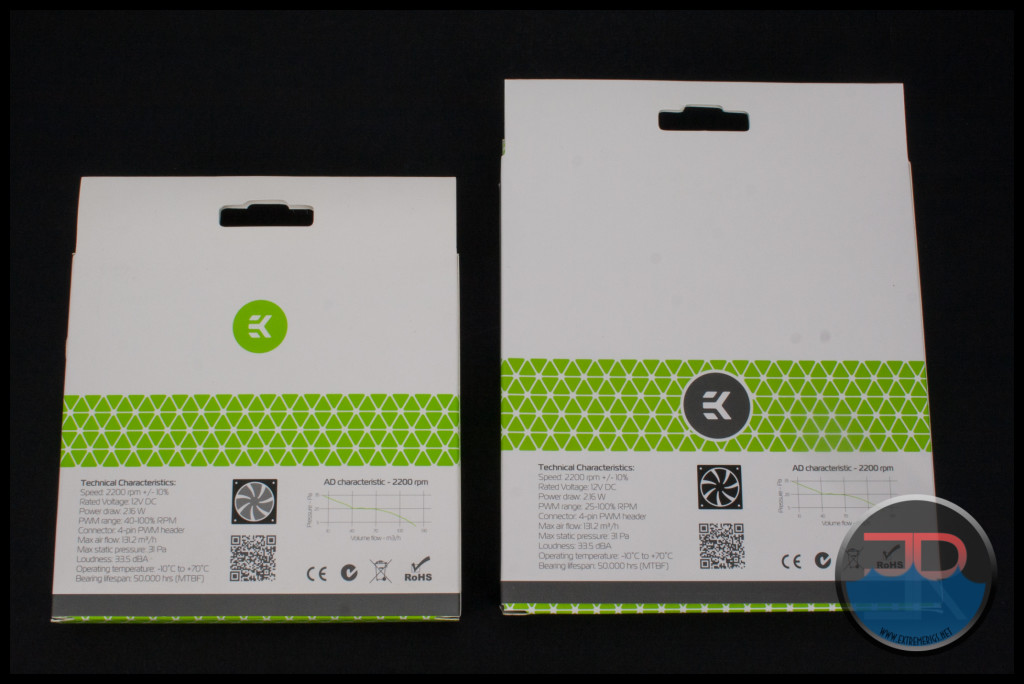 Let’s see if we can take a closer look.
Let’s see if we can take a closer look.
Firstly the F4-120 (non ER)
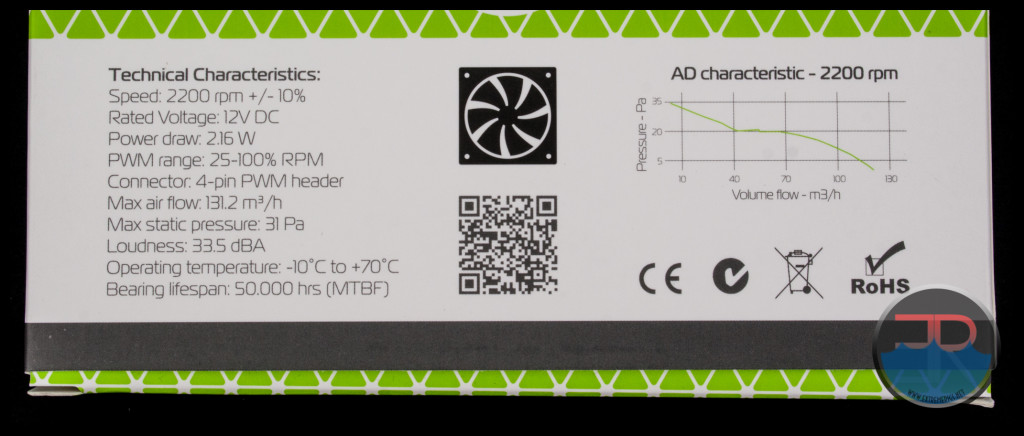 There are no real differences listed beyond the colors and PWM range again. Let’s see what’s inside:
There are no real differences listed beyond the colors and PWM range again. Let’s see what’s inside:
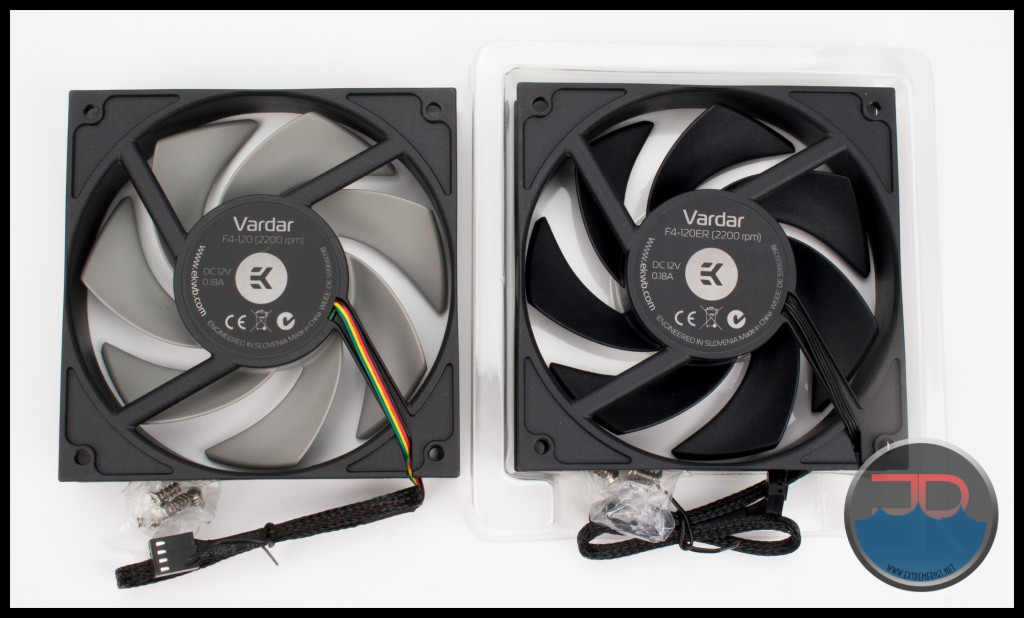 Both models come with 4 self-tapping screws tucked under the black sleeved cable. The all black ER version has a clear plastic tray that the fan is in which explains the slightly larger box size. The clear tray is photographed above, but being clear it is difficult to see.
Both models come with 4 self-tapping screws tucked under the black sleeved cable. The all black ER version has a clear plastic tray that the fan is in which explains the slightly larger box size. The clear tray is photographed above, but being clear it is difficult to see.
The black rotor of the ER version is stands out and for many buyers matching colors will be a deciding factor. The grey rotor of the Non-ER version is certainly not distracting and to my mind is still aesthetically pleasing. However these new color options on the ER should really satisfy those who loved Gentle Typhoon performance, but hated the colors.
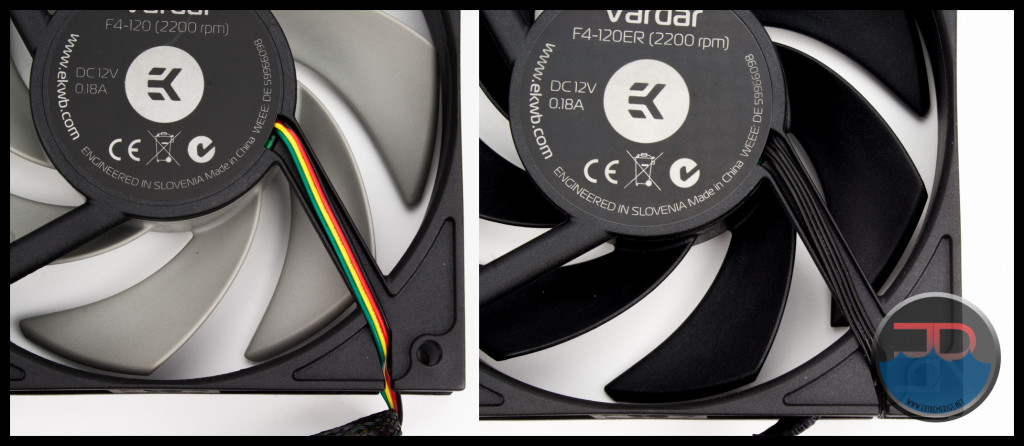 In addition because the sleeve doesn’t extend all the way to the hub, the original fan had exposed rainbow colored wires visible on one side of the fan. These were very distracting and really required you to resleeve the fan properly. The ER clearly has better visual appeal with its all-black stealth look where a resleeve is no longer necessary. This is a big improvement for those of us who are ocd but lazy.
In addition because the sleeve doesn’t extend all the way to the hub, the original fan had exposed rainbow colored wires visible on one side of the fan. These were very distracting and really required you to resleeve the fan properly. The ER clearly has better visual appeal with its all-black stealth look where a resleeve is no longer necessary. This is a big improvement for those of us who are ocd but lazy.
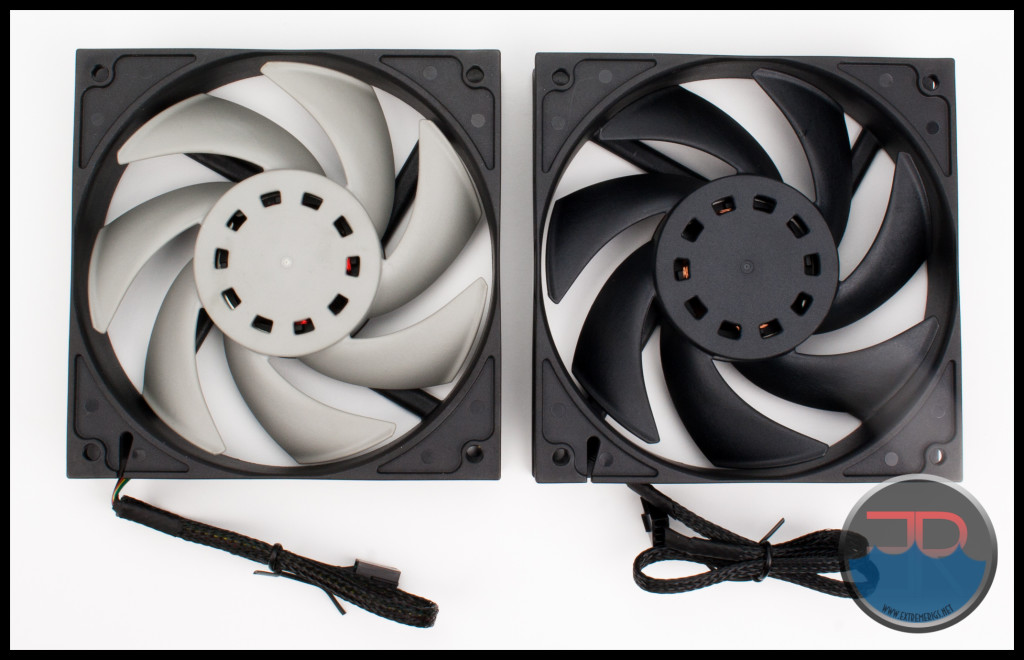 On the reverse side the fans look identical. Both models have the same length cable with black connector plugs. Both have the same loose weave black sleeving which goes only to the frame.
On the reverse side the fans look identical. Both models have the same length cable with black connector plugs. Both have the same loose weave black sleeving which goes only to the frame.
 Again the ER version (below) has the slight visual edge because it has the black wires under the sleeving so there is no hint of color through the sleeve.
Again the ER version (below) has the slight visual edge because it has the black wires under the sleeving so there is no hint of color through the sleeve.

The F4-120ER is also available in a pimp looking all white variant which has white everything; frame, rotor, wires, sleeving and connector.
EK-Vardar F4-120ER (2200rpm) White
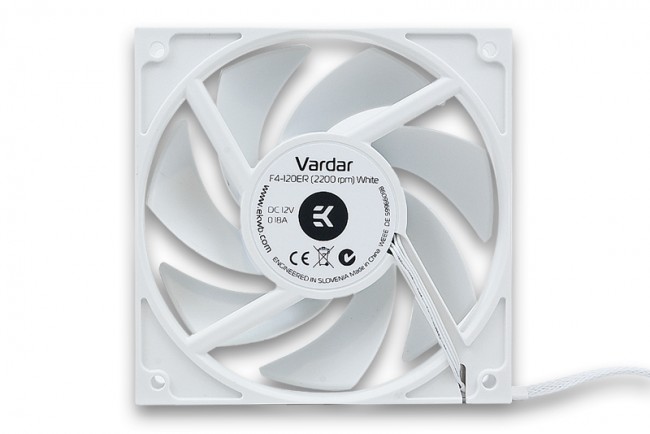
So we have a few cosmetic differences and the only technical detail we could tell is different from the specs is the PWM range, so that is all I am going to test for now.
Testing PWM Vs RPM
For the testing I utilized the thermal chamber (normally occupied by a radiator being put through its paces) as it was unoccupied and has all the wiring and necessary controlling and recording equipment already in place.
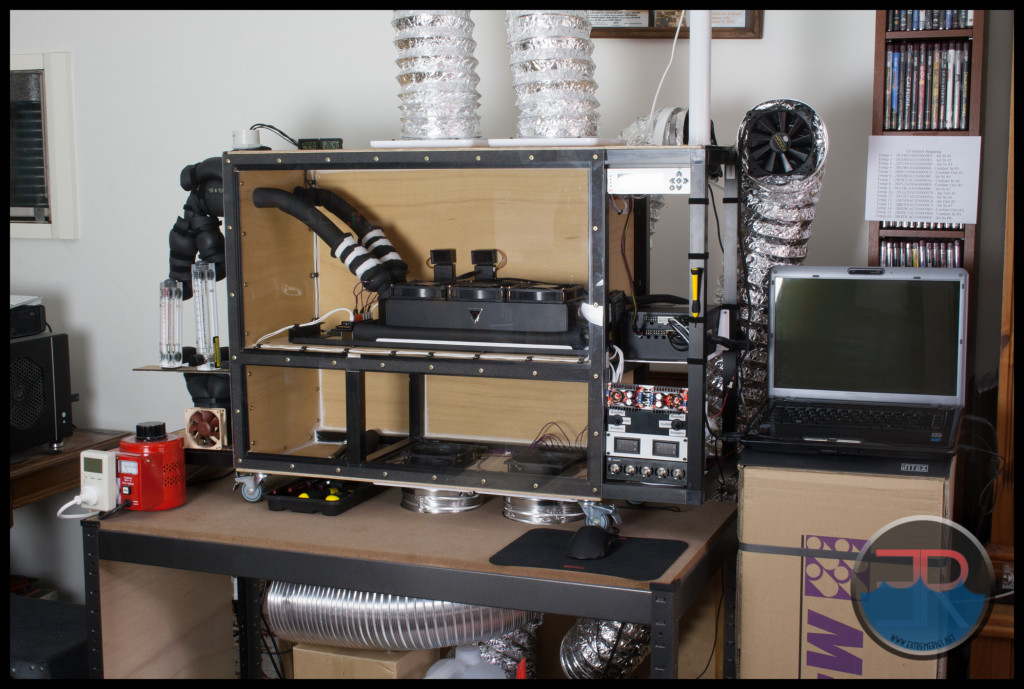 While the Rig has two Aqaueros installed, both are Aquaero 5 models and one is dedicated for the pump which I didn’t want to mess with. Additionally the rig was initially set up with 3 pin fan splitters for power delivery to the GT fans that are normally running in there.
While the Rig has two Aqaueros installed, both are Aquaero 5 models and one is dedicated for the pump which I didn’t want to mess with. Additionally the rig was initially set up with 3 pin fan splitters for power delivery to the GT fans that are normally running in there.
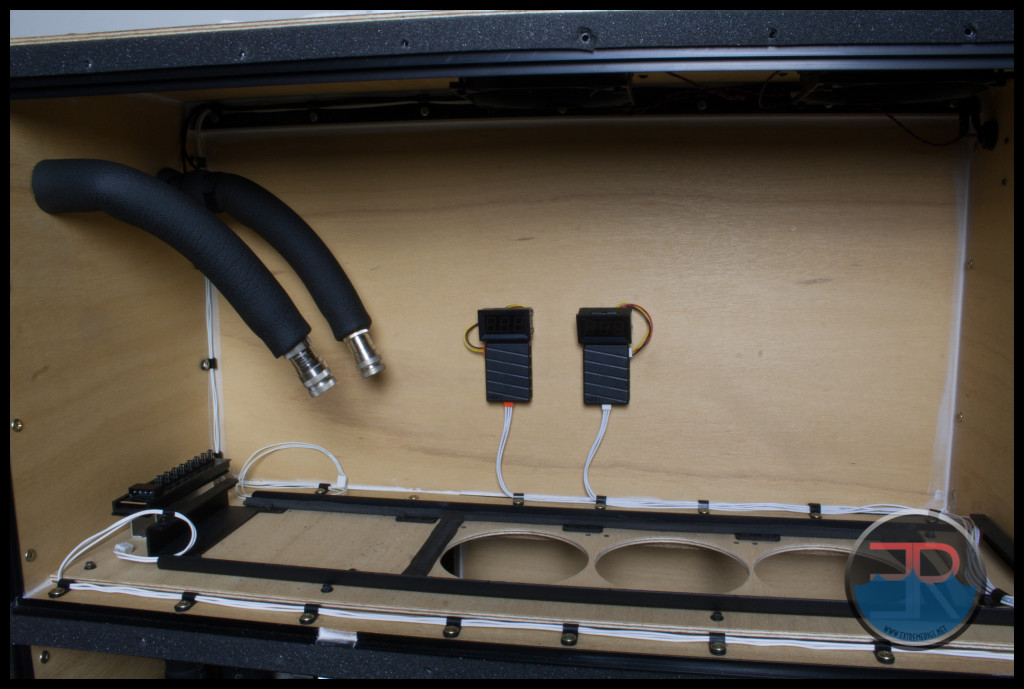 So I had to get a little creative with the wiring to get simultaneous rpm readings for both fans while controlling them from same PWM channel of the fan Aquaero. No real head-aches and the end result was both fans receiving 12.1 Volts (displayed at each 3 pin splitter) from same PSU plug. Each fan had the connectors replaced (4 pin removed) so they now have a 3 pin each for the splitters which supply the 12 V power while also sending the tach/rpm signal back the their own fan channels on the Aquaero. Another 3 pin connector for the single PWM wire of each fan was connected to a split PWM cable from the Aquaero.
So I had to get a little creative with the wiring to get simultaneous rpm readings for both fans while controlling them from same PWM channel of the fan Aquaero. No real head-aches and the end result was both fans receiving 12.1 Volts (displayed at each 3 pin splitter) from same PSU plug. Each fan had the connectors replaced (4 pin removed) so they now have a 3 pin each for the splitters which supply the 12 V power while also sending the tach/rpm signal back the their own fan channels on the Aquaero. Another 3 pin connector for the single PWM wire of each fan was connected to a split PWM cable from the Aquaero.
And finally we get to the RPM readings for simultaneous PWM changes on ER and NON-ER versions of the Vardar F4-120 fans.
The Data Table First
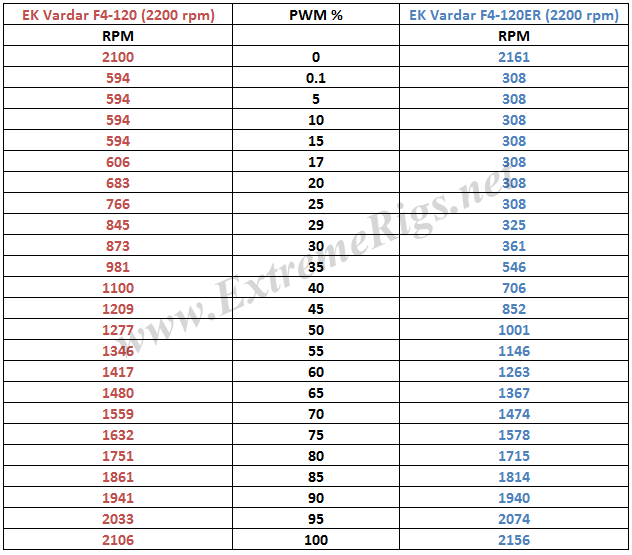
Here is the data converted into a chart for your viewing pleasure:
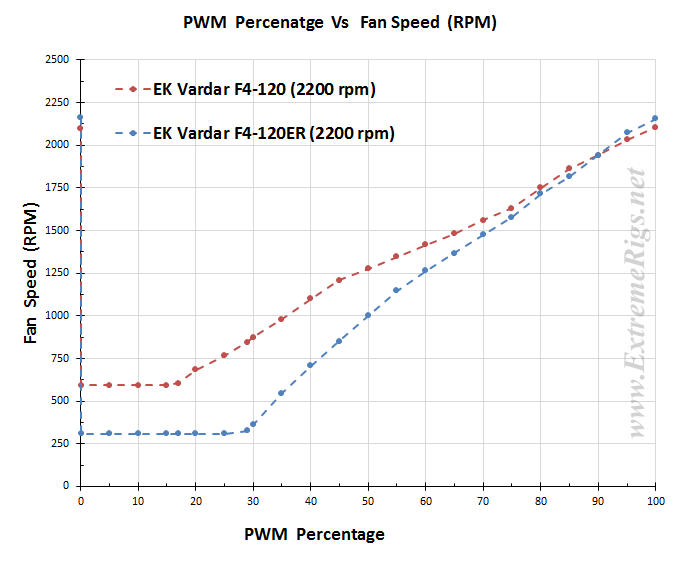 From the chart it is obvious that the ER version is capable of operating at a much lower RPM, ~300RPM vs. the 600 RPM of the Non-ER version. The ER is also capable of reaching slightly higher maximum RPM’s. This is great news – 300RPM is truly silent while 600RPM can just bearly be heard in the quieter environments. Previously to hit 300RPM while still maintaining high pressure you had to use a good fan controller like the Aquaero in voltage control mode.
From the chart it is obvious that the ER version is capable of operating at a much lower RPM, ~300RPM vs. the 600 RPM of the Non-ER version. The ER is also capable of reaching slightly higher maximum RPM’s. This is great news – 300RPM is truly silent while 600RPM can just bearly be heard in the quieter environments. Previously to hit 300RPM while still maintaining high pressure you had to use a good fan controller like the Aquaero in voltage control mode.
At 0% both operate at their maximum RPM level. It should be noted that the maximum RPM level is also higher as tested on the ER model. We had seen consistently 10% low RPM readings on the non ER models and so it’s good to see the ER get closer to the typical rated speed.
The NON-ER version starts responding to PWM adjustments before the ER version. For the NON-ER the first change was at 17%, while the ER version did not respond until 29%. This means that not only do you get extended range, but you’re also not giving up control resolution to get it.
Conclusion
After seeing the results it’s clear that the ER model has more capability than the vanilla model, so it’s really a question of whether that or the color is worth the extra $2 to you or not.
Many water cooling users may not take advantage of this extra range. After all plenty of users simply set and forget, or are happy with the noise of 600RPM for their minimum fan speed. Having said that there is no disadvantage either to using these extended range fans, plus the fan also pushes a little higher on RPM too.
The reason most people will buy the ER version is not for the Extended Range of the PWM Duty Cycle, but for the color options, and who could blame them. The all black and all white color combos of the ER look sensational and will add aesthetic appear to any build.
My advice is if you’re trying to decide which model of the Vardar F4-120 fan to purchase is to not get caught up with the Extended Range and differing PWM Duty Cycles. Simply select the one which you find most aesthetically pleasing and matches the color scheme of your build the best. Whichever Vardar F4 model you decide on, you will be happy with your purchase as they have very good radiator performance, and they look great too.








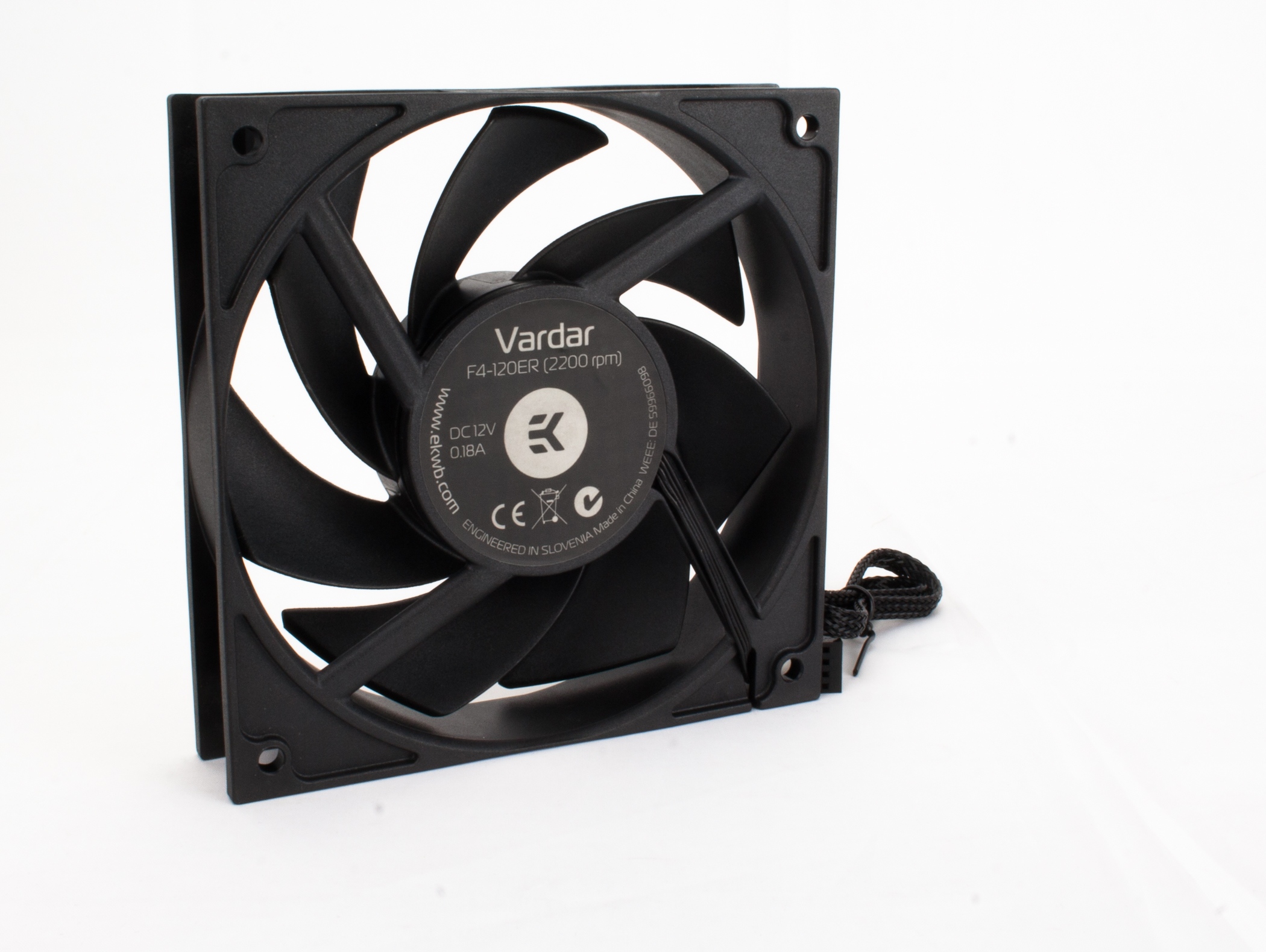
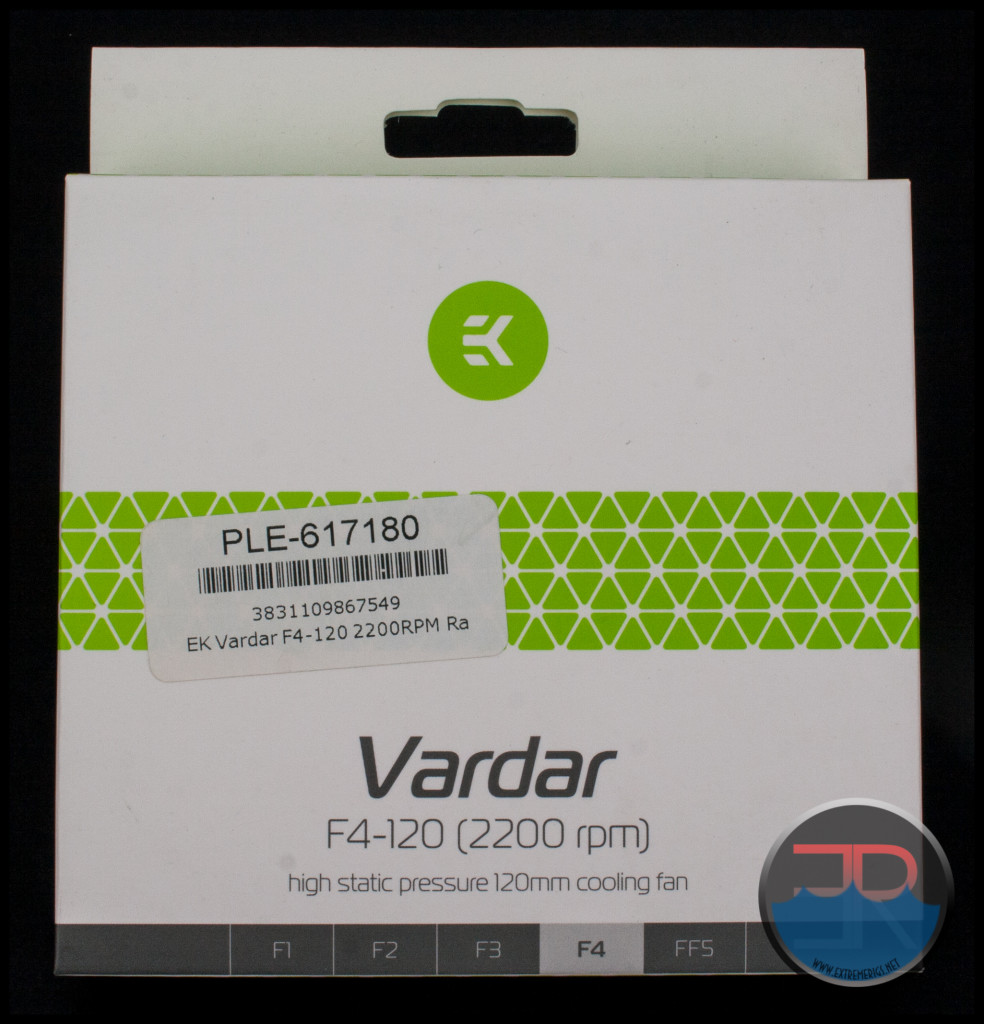
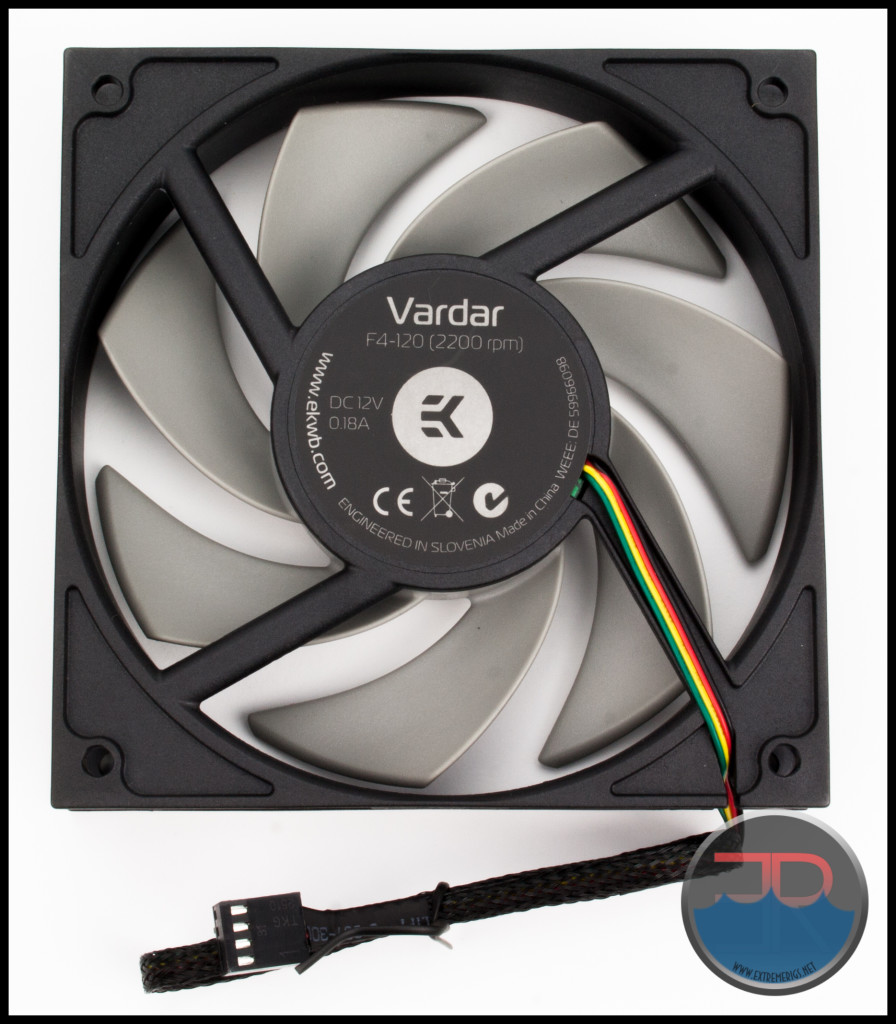
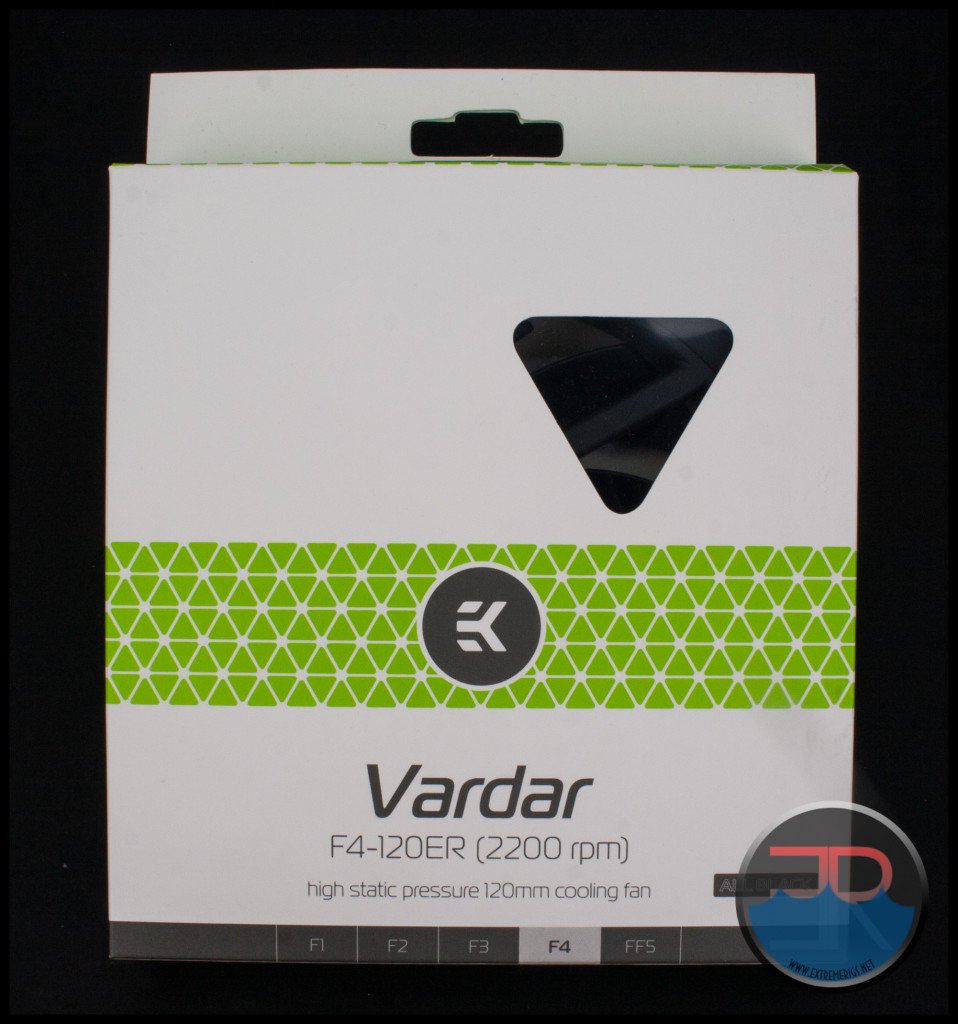
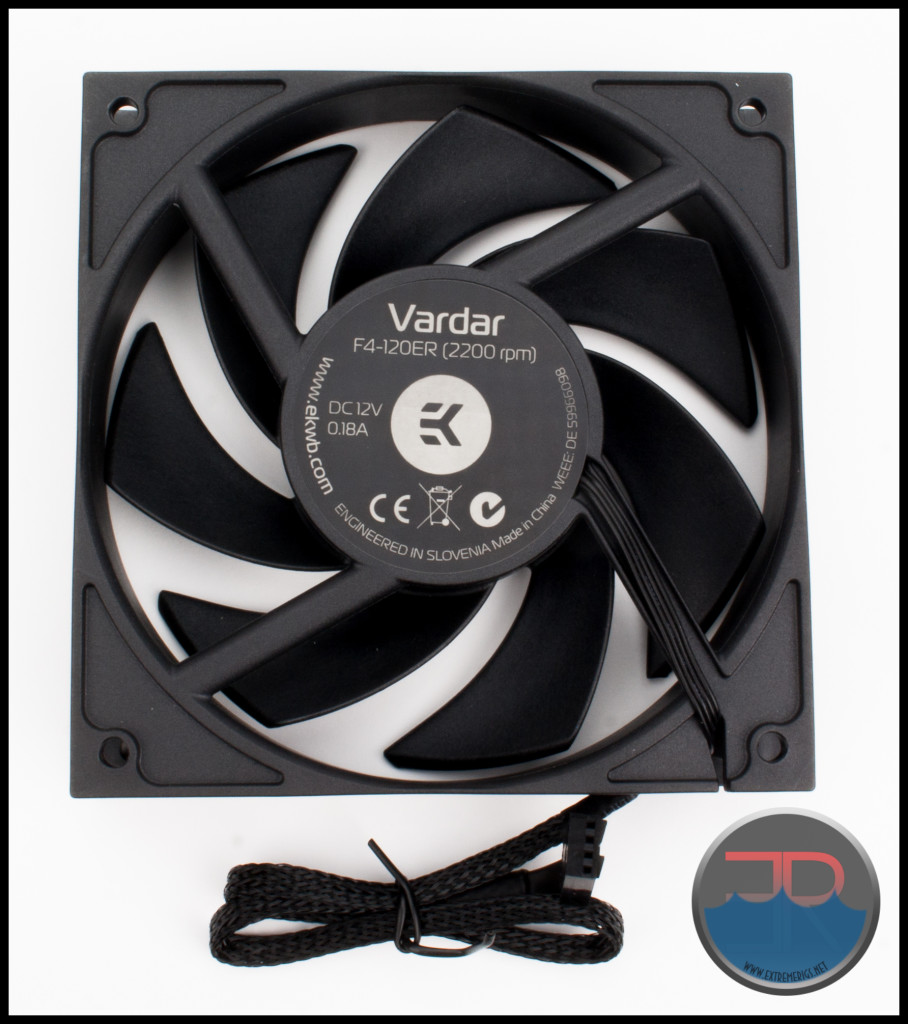
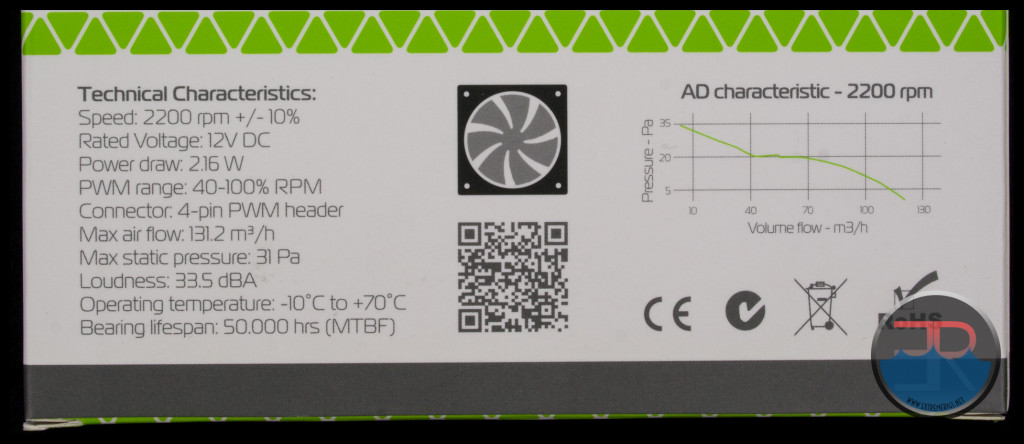
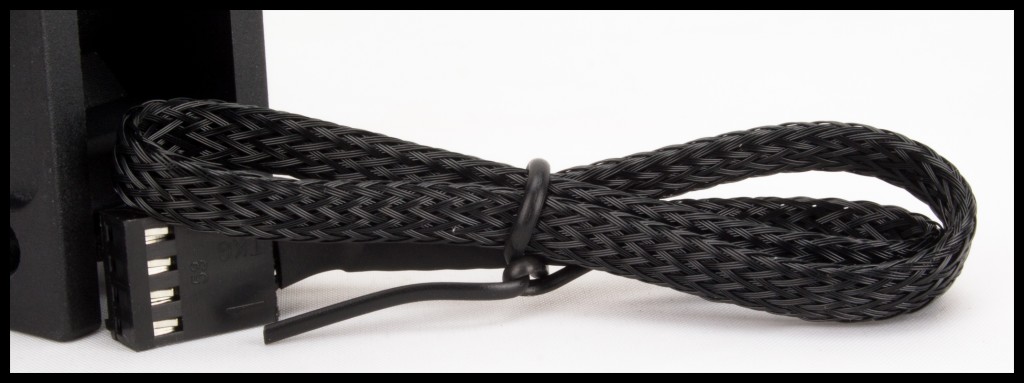
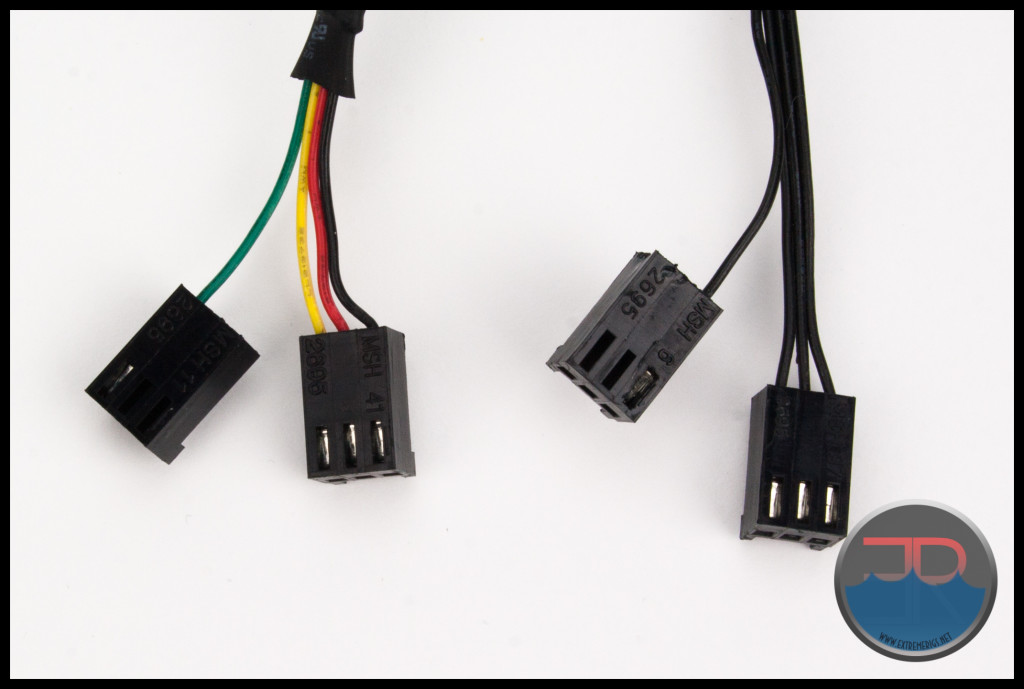
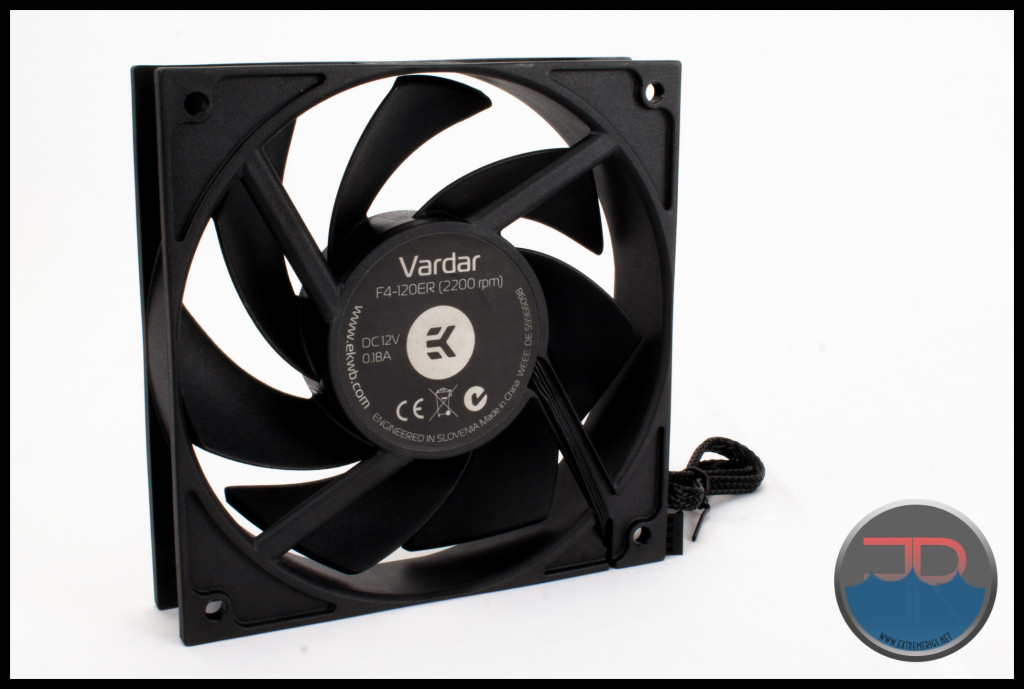




[…] Putting some ER into EK’s F4-120 Vardar Fan […]
Comments are closed.